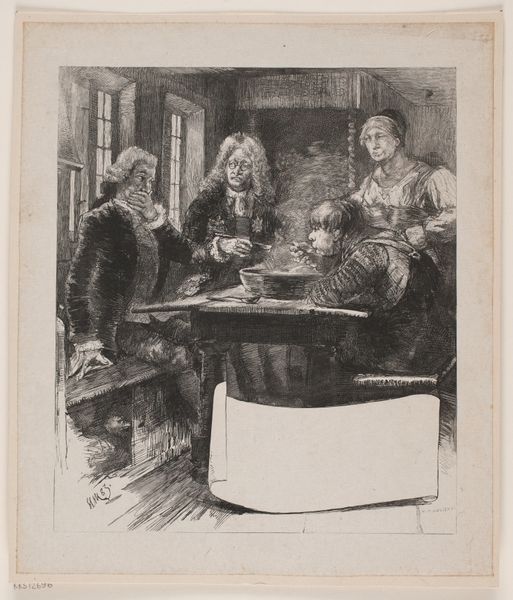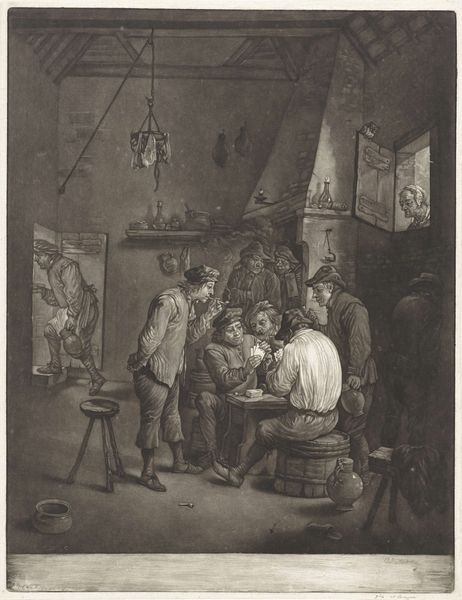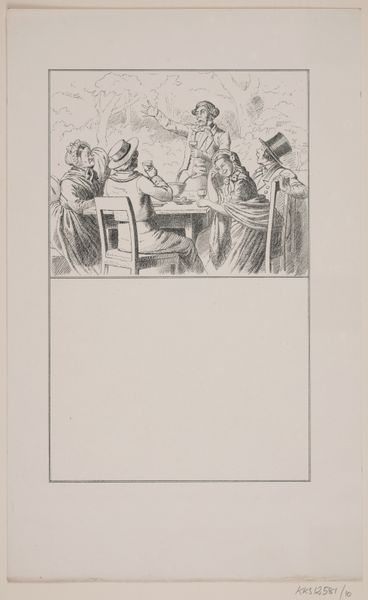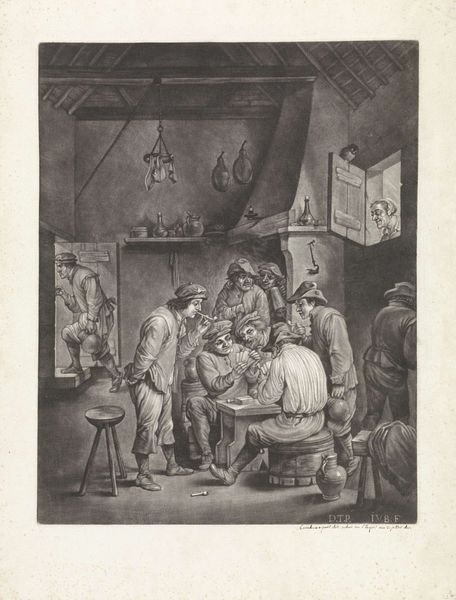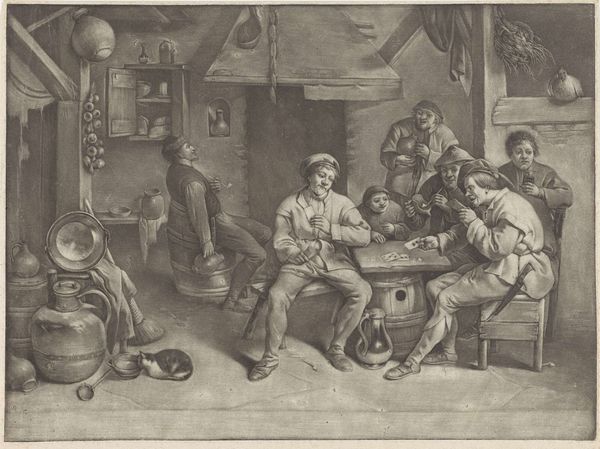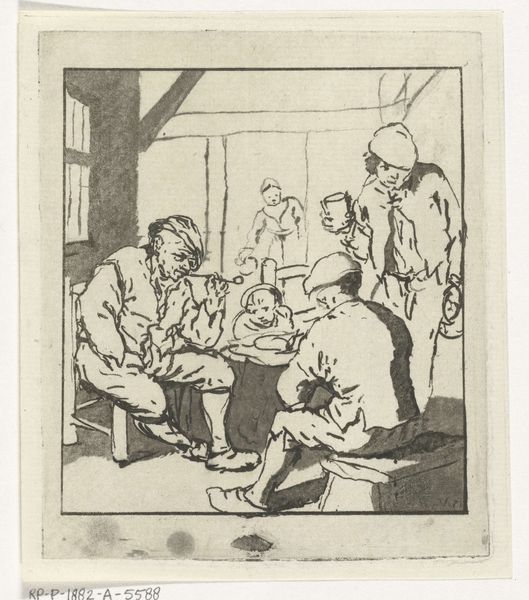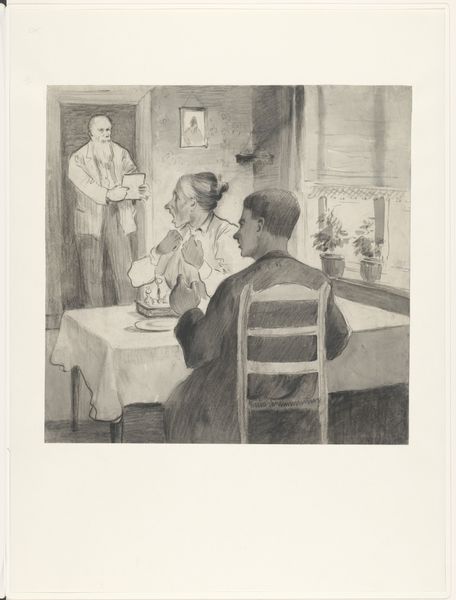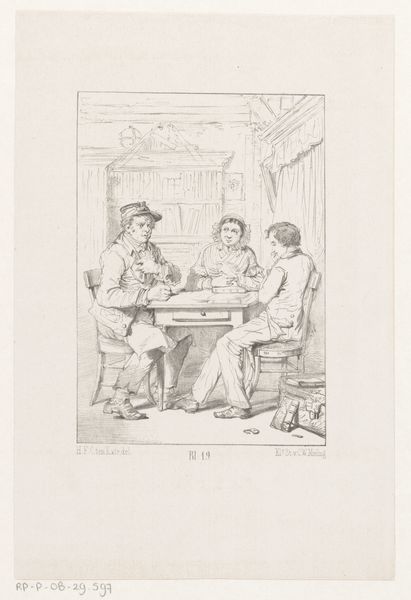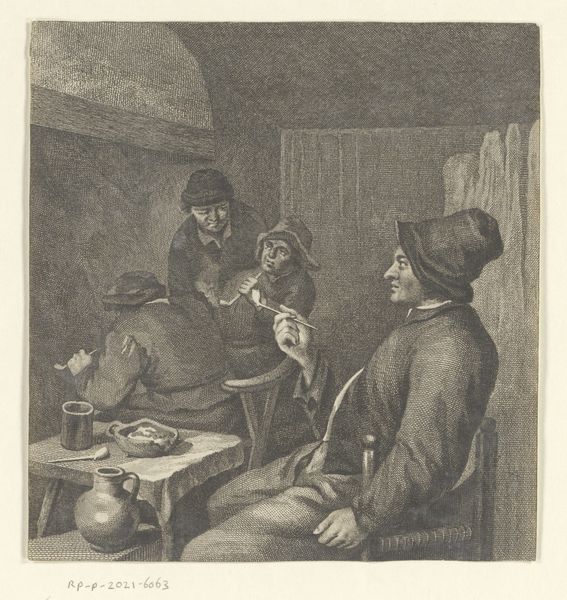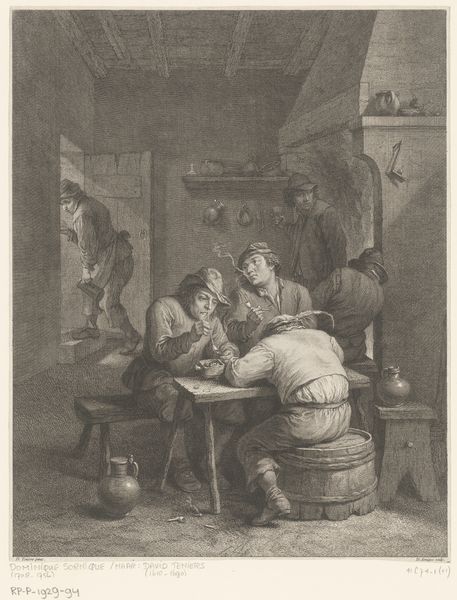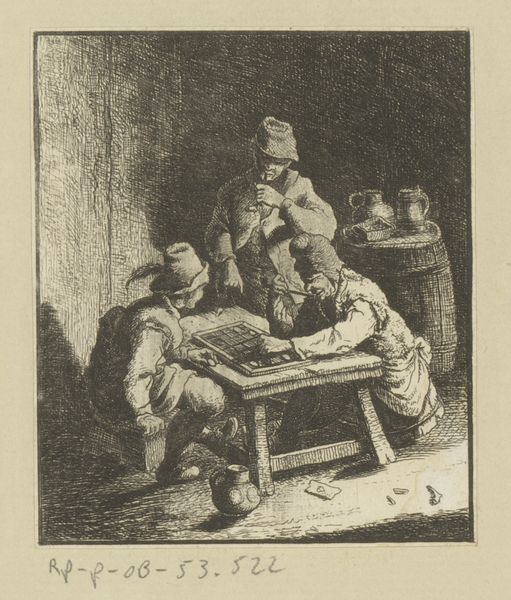
Krostue. Illustration til H.C. Andersen, "Hvad fatter gør er altid det rigtige" 1853 - 1932
0:00
0:00
Dimensions: 220 mm (height) x 145 mm (width) (billedmaal)
Curator: This drawing, dating from between 1853 and 1932, by Henrik Bornemann, is an illustration for Hans Christian Andersen's story, "What the Father does is always right." The medium appears to be ink and pencil on paper, with an engraving style. Editor: Immediately, I'm struck by the stark contrast and the overall moodiness. It's primarily a tonal composition, dominated by the interplay of dark and light to suggest atmosphere. The clustering of the figures around the table makes me think the space might be cramped. Curator: Exactly. You’re seeing how Bornemann uses genre painting to reflect everyday social life. This scene likely depicts a local tavern. Consider Andersen's narrative, too; it challenges bourgeois values through folksy wisdom. Do we interpret it as satire or endorsement? Editor: The linear quality of the engraving definitely enhances the storytelling, even without prior knowledge of the original tale. Note how light emphasizes the faces, directing the eye. The bottles in the foreground also serve as framing elements, leading inward to the men seated. The composition as a whole invites us to sit down and overhear what they have to say. Curator: The composition clearly portrays social dynamics and class distinctions of that period, through modes of representation approved at the Statens Museum for Kunst. How might period viewers interpret this tableau, especially if familiar with Andersen's story and its subversive content? Editor: Looking closer, you realize Bornemann opted for impressionistic rather than photographic realism to offer, or enhance, a commentary on such issues, a kind of 'truthiness' of experience, where capturing detail precisely became a secondary aim. What might have happened just prior to the peddler walking through that door? It begs questions, instead of explaining, that creates a more engaging interaction between artwork and audience. Curator: Your attention to its compositional features encourages broader thought of Bornemann's historical influences. This image clearly depicts a social dynamic indicative of a past way of life. Editor: It all harmonizes: subject, theme, style. Thanks for unpacking the historical setting—I can see that so much better now.
Comments
No comments
Be the first to comment and join the conversation on the ultimate creative platform.
